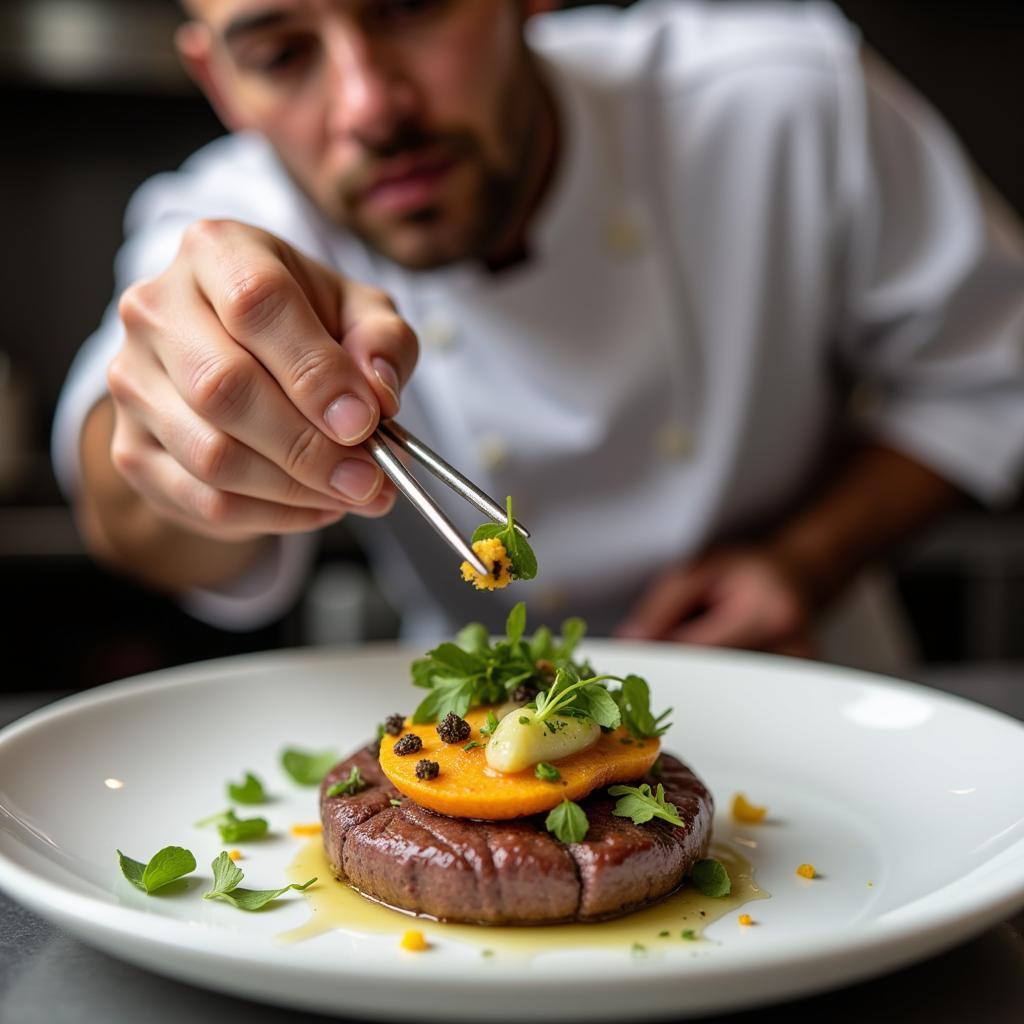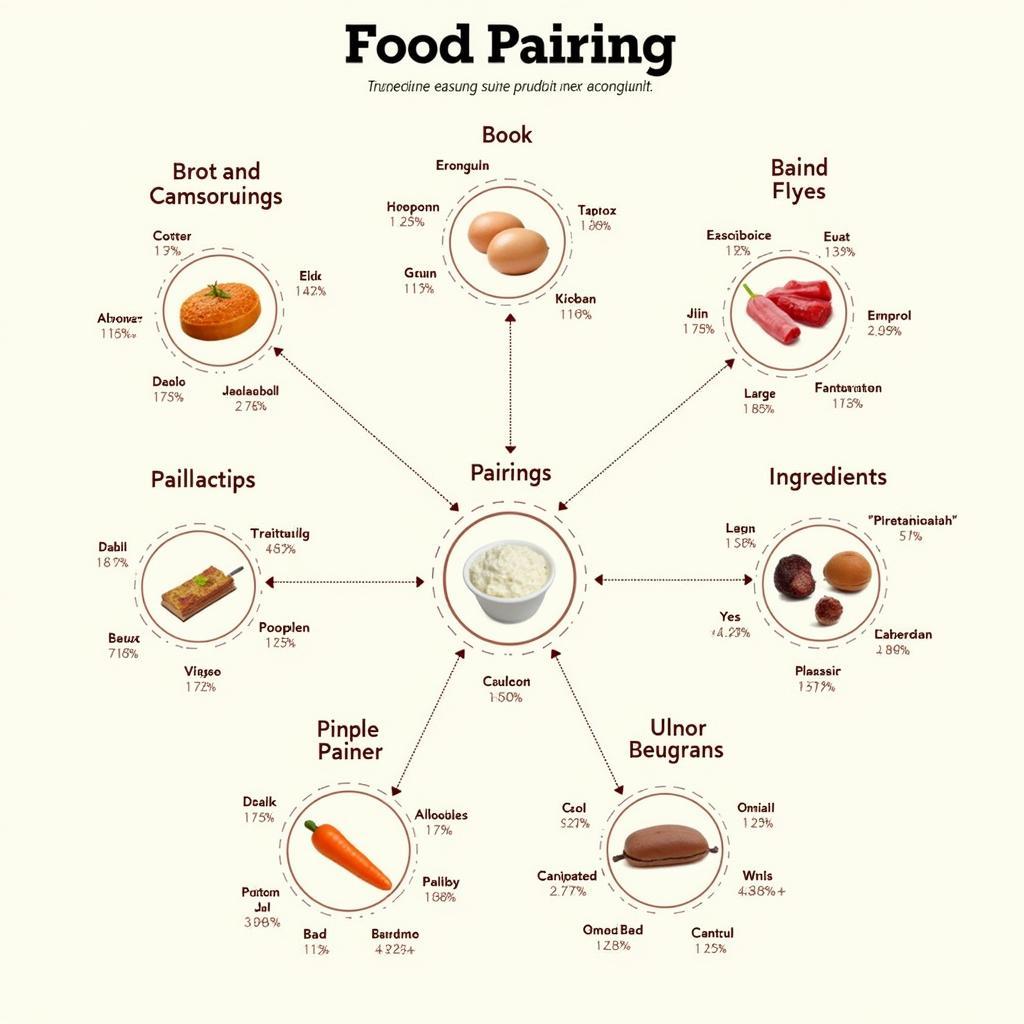The Art and Science of Foodpairing
The Art And Science Of Foodpairing is a fascinating exploration of how different ingredients interact with each other based on their aromatic profiles. It’s more than just throwing flavors together; it’s a systematic approach to creating harmonious and sometimes unexpected culinary experiences. From understanding the underlying chemical compounds to the psychology of flavor perception, foodpairing opens up a world of possibilities for both professional chefs and home cooks alike.
Unveiling the Secrets of Foodpairing: Aromatic Compounds
At the heart of foodpairing lies the science of aroma analysis. Every ingredient, from a humble tomato to an exotic spice, possesses a unique aromatic profile composed of volatile organic compounds (VOCs). These VOCs are what give food its distinctive smell and contribute significantly to its taste. By identifying the key VOCs in different ingredients, we can begin to understand how they might complement or clash.
Foodpairing relies on the principle that ingredients sharing dominant VOCs are likely to pair well together. For example, chocolate and blue cheese, seemingly disparate, share several key aromatic compounds, making them a surprisingly delicious match. This scientific approach allows us to move beyond traditional flavor combinations and explore exciting new culinary territories.
The Art of Foodpairing: Beyond the Science
While the scientific basis of foodpairing provides a framework, the true magic lies in the artistic interpretation of these principles. It’s about understanding how different textures, flavors, and temperatures interact to create a holistic sensory experience. A successful foodpairing isn’t just about matching dominant aromas; it’s also about balancing contrasting flavors, creating textural interplay, and considering the overall presentation of the dish.
Think of it like composing a piece of music. The individual notes represent the different ingredients, and the way they are arranged and combined creates the melody and harmony of the dish. A chef skilled in foodpairing can orchestrate these elements to create a symphony of flavors that delight the palate.
 Chef Creating a Food Pairing Dish
Chef Creating a Food Pairing Dish
Exploring the Applications of Foodpairing: From the Kitchen to the Cocktail Bar
The applications of foodpairing extend far beyond the kitchen. Mixologists are increasingly using these principles to create innovative and balanced cocktails. By understanding the aromatic profiles of different spirits, fruits, and herbs, they can craft drinks that are complex, nuanced, and truly memorable.
Imagine a gin cocktail infused with strawberry and basil, or a rum-based concoction featuring pineapple and smoked paprika. These combinations, guided by the science of foodpairing, push the boundaries of traditional mixology and offer exciting new flavor experiences.
“Foodpairing allows us to unlock a whole new level of creativity in the kitchen and beyond,” says renowned chef and food scientist, Dr. Evelyn Dubois. “It’s a tool that empowers us to explore the endless possibilities of flavor and create truly unique culinary experiences.”
How Does Foodpairing Work in Practice?
So, how can you incorporate foodpairing into your own cooking? Start by exploring existing foodpairing databases and charts. These resources provide valuable information on the aromatic profiles of various ingredients and suggest potential pairings. Experiment with different combinations and trust your palate.
“Don’t be afraid to experiment,” encourages award-winning mixologist, Julian Vance. “Foodpairing is about discovery. Sometimes the most unexpected combinations yield the most exciting results.”
 Food Pairing Chart with Various Ingredients
Food Pairing Chart with Various Ingredients
Conclusion: Embracing the Art and Science of Foodpairing
The art and science of foodpairing offers a powerful approach to culinary exploration. By understanding the underlying science and embracing the artistic possibilities, we can unlock a world of new flavors and create dishes that are both delicious and innovative. So, embrace the adventure and let foodpairing guide you on a journey of culinary discovery.
FAQ
- What is foodpairing? Foodpairing is the science and art of combining different ingredients based on their shared aromatic compounds.
- How does foodpairing work? Foodpairing analyzes the volatile organic compounds (VOCs) in ingredients to identify potential pairings.
- Where can I find foodpairing information? Online databases and charts provide information on ingredient pairings.
- Is foodpairing only for chefs? No, anyone can use foodpairing principles to enhance their cooking.
- What are some examples of unexpected food pairings? Chocolate and blue cheese, strawberry and basil, pineapple and smoked paprika.
For any assistance or inquiries regarding Online Art workshops incorporating foodpairing principles, please contact us at Phone: 02462573573, Email: danteum@gmail.com, or visit us at Savico Megamall, 7-9 Đ. Nguyễn Văn Linh, Gia Thụy, Long Biên, Hà Nội 10000, Việt Nam. We have a 24/7 customer support team available.



